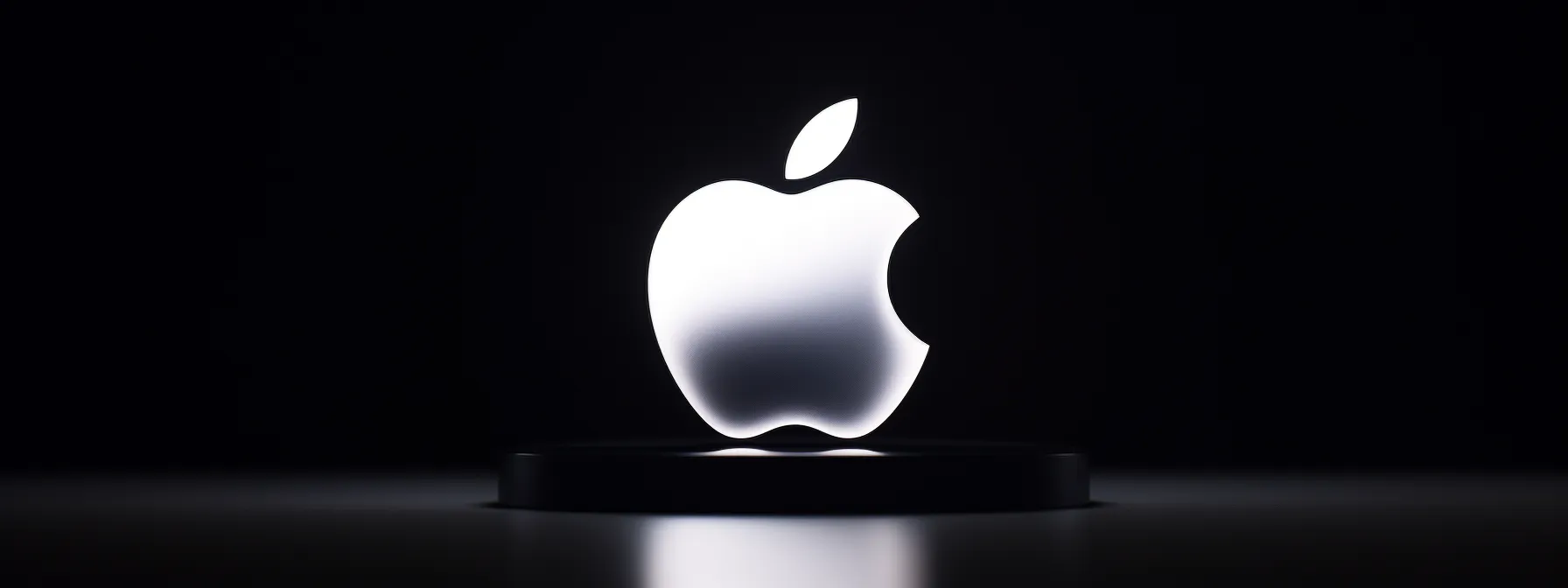
Mastering the Effective Use of Visual Elements in Brand Identity Design
Visuals speak a language that resonates immediately with our senses.
Much like an artist sculpts a masterpiece, a brand shapes its identity using colors, words, and images, each element folded purposefully into the fabric of its identity.
Constructing a brand identity, like erecting a towering monument, is an art married to strategy, demanding a delicate balance between aesthetic allure and solid business goals.
This masterful symphony of brand identity elements grabs hold of the target audience, beckoning them, much like a lighthouse draws ships to safe harbor.
Keep your eyes trained on this exciting journey of visual transformation in brand identities as we turn a new leaf in understanding its influence.
Key Takeaways
- Visual Elements Are Crucial in Defining and Shaping a Brand’s Identity
- A Brand Logo Is Often the First Touchpoint for the Target Audience and Should Represent the Brand’s Mission Statement
- Consistency in Visual Branding Across All Touchpoints Is Crucial for Brand Recognition and Trust
- Testing and Measuring the Effectiveness of Brand Elements Is Essential to Ensure They Resonate With the Target Audience
- A Visually Appealing Brand Identity Can Help Drive Brand Recognition and Customer Loyalty
Understanding the Role of Visual Elements in Brand Identity

Imagine building your brand as an artist shaping their masterpiece. Each stroke, or in this case, each aspect of your branding process serves a significance that reverberates through every part of your brand identity. Which brush do you pick up first? Well, that’s where visual elements come in:
- Recognizing the power of design elements in defining brand identity.
- Understanding the impact of these elements on brand image and recognition.
- Mastering the use of visual elements as part of your brand strategy.
Casting the net wide for any artist is a brand logo. This is your mission statement encapsulated in a symbol, and it’s often the first touchpoint for your target audience. Sure, the table of contents of your website design or your social media posts might detail your brand story, but your logo design—the lines and curves, the typeface, the color palette—all are integral pieces in the crafting of your brand asset.
Effectively creating a strong brand design goes beyond mere aesthetics. Everyone knows that you have to consider things like brand guidelines and brand values when designing a logo or any other branding materials. But what about the impact of the physical and digital mediums such as web design and advertising campaigns on your brand value? That’s where the power of brand style guides and solid marketing strategy comes in, blending the technical and the creative to ensure a consistent brand personality across all personas.
Having delved into the intricacies of visual elements in brand identity, let’s now paddle into the significant world of visual branding. Brace yourself as we explore how this powerful tool can propel your business into the stratosphere!
Importance of Visual Branding for Your Business

Picture this scenario for a minute – you’re strolling through a grocery store aisle, your eyes darting around like buzzing bees, bouncing from one visually alluring product packaging to another. What makes you reach out for that certain box of cereal or that specific brand of pasta sauce, considering there are dozens of similar offerings? Often, it’s the magnetic pull of visually appealing brand elements.
These sparks of visual branding aren’t mere flash and dazzle, oh no. They are your brand story told visually, designed to form that instant, frosty connection with your audience in a busy marketplace. It’s like crafting a brand logo, where the design elements represent your brand’s heart and soul, narrating your business goals and brand personality in the most visually striking way possible.
But remember, visual branding isn’t just about looking pretty, it’s about being recognized, remembered, and revered. It’s the sunshine smile of your brand value that lures your target audience closer. So, when it comes to your branding process, make sure your brand identity design isn’t only about creating a pleasing color palette or an aesthetic typeface, but more about designing for powerful brand recognition.
Now that we’ve lit the spotlight on the undeniable importance of visual branding for your business, it’s time to hone in on the specifics. Buckle up as we dive into the captivating realm of the key elements that define a visually effective brand identity!
Key Elements of a Visually Effective Brand Identity

So, you’ve realized the glory of a visually magnetic brand identity, right? Now, to mold a visually effective brand, your hands will dance around several key elements. Let’s loosen up those hands and warm up those artistic muscles:
- Logo Design: Your brand logo is the face of your company, requires thoughtful design matching company ethos and brand guidelines.
- Color Palette: These are your brand’s uniforms, instantly recognizable and should reflect your brand personality.
- Typography: The typeface should mirror your brand image while ensuring readability across all touchpoints.
Your logo design is the sun around which all your other brand identity elements orbit. It should reflect your brand story while being elegant and timeless. Also remember, the journey of your logo is long and winding – from social media profiles to marketing materials, from advertising campaigns to business cards. So it must shine bright and clear across all platforms.
The armor of your brand, your color palette, breathes life into your brand personality. Use it wisely to create a sense of unity and cohesion around your brand elements. And amidst all this, don’t overlook your typeface, it’s the voice of your brand on silent mode. Whether it’s your website design or your brand style guide, your chosen typeface should echo your brand values and be easy on the eyes.
Armed with these insights on what makes for a potent visual brand identity, let’s catapult ourselves into action-packed real-world scenarios. Prepare for an engaging expedition as we unravel some triumphant examples of exceptional visual brand identities in practice.
Real-World Examples of Powerful Visual Brand Identity

Let’s fetch inspiration from the field, shall we? To grasp the power of visual brand identity design, a peek into the wild world of successful brands can be enlightening. Here are a few brands that have swept the stage with their stellar visual branding:
- Apple: Known for its minimalist design ethos, Apple’s simplicity speaks volumes of its brand personality.
- McDonald’s: The golden arches is one of the most recognized logos globally, mirroring the brand’s commitment to consistency.
- Nike: The iconic swoosh is a simple yet powerful symbol of movement and freedom, aligning with the brand’s mission statement.
The charm of Apple lies in its understated elegance. With a brand logo as simple as an apple with a bite taken out, it represents the brand’s commitment to innovation and ease of use. Their typefaces and color palette dovetail with their minimalist design philosophy, cementing their brand image as modern and advanced.
McDonald’s encapsulates its business goals in a pair of golden arches that symbolize trust, consistency, and happiness. Eat at any McDonald’s, and you know the taste and quality will be consistent, mirroring its brand value to the letter. The logo acts as a touchpoint, leading customers to associate their positive experiences with the brand.
Brimming with inspiration from these real-world visual brand identity examples, are you ready to take the spotlight? Let’s plunge into some proven strategies to elevate and empower your brand’s visual personality.
Strategies for Enhancing Your Brand’s Visual Identity

Ready to roll up those sleeves and dive into the whirlpool of visual branding? Good! But where do you start and how do you proceed? Here are a few strategies to launch you on your visual brand identity journey:
- Clearly Define Your Brand Personality: Use visual elements that echo your brand attributes.
- Consistency Across All Touchpoints: Make your brand recognizable, be it in your webpage design or business cards.
- Develop a Comprehensive Brand Style Guide: A go-to manual outlining your brand’s design elements, typeface, color palette, etc.
Shape your brand personality like a sculptor chiseling a stone. Is your brand bold and audacious or elegant and minimalist? Your design elements, color palette, and typeface choices should echo this personality, making your brand visually appealing to your target audience.
Consistency is key in building brand trust. If your brand logo looks one way on your social media and another on your website design, it shatters the brand recognition you’ve worked so hard to build. Irrespective of the medium or platform, your brand image should reflect a uniform narrative.
Bolstered by these innovative strategies, our brand’s visual identity is now poised for transformation. But, don’t we all crave evidence of success? Let’s dive into the fascinating world of metrics to evaluate our gleaming visual brand identity.
Measuring Success: Evaluating Your Visual Brand Identity

Now, you’re done painting your visual brand masterpiece but how do you gauge if it’s a Mona Lisa or a random doodle? Yes, it’s time to don your investigator cap and drill into the effectiveness of your brand elements. Remember, your visual brand identity isn’t just about appeasing art critics, but to resonate with your target audience and propel your business goals.
Start exploring uncharted waters by relentlessly testing your brand assets. See how your target personas respond to your brand logo, color palette, typeface, or any other brand identity elements. Do these elements pique their interest, align with their expectations? Also, look at your brand recognition—do people recall your logo when they see it or does it blend into the vast sea of forgotten brands?
If your brand story is well-told visually, it should spark a connection, consequently driving brand recognition and customer loyalty. So the next time you’re tweaking your website design or updating your branding process, remember to keep your measuring tape handy. After all, what gets measured, gets managed, right?
 Skip to content
Skip to content





